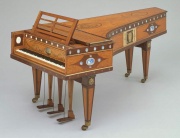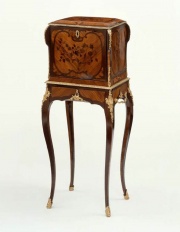Difference between revisions of "Purpleheart"
Jump to navigation
Jump to search
(username removed) |
(username removed) |
||
| Line 29: | Line 29: | ||
== Authority == | == Authority == | ||
| − | * | + | * Gordon Hanlon, contributed information, 1998 |
| − | * | + | * Ralph Mayer, ''A Dictionary of Art Terms and Techniques'', Harper and Row Publishers, New York, 1969 (also 1945 printing) |
| − | * | + | * F. H. Titmuss, ''Commercial Timbers of the World'', The Technical Press Ltd., London, 1965 |
[[Category:Materials database]] | [[Category:Materials database]] | ||
Revision as of 06:45, 24 July 2013
Description
A purplish hardwood obtained from species in the genus Peltogyne that are native to tropical regions of Central and South America. Purpleheart or amaranth, wood has a fine, uniform texture and grain that is straight or slightly roey. The durable, shock-resistant wood is sometimes used for carving and for vehicle construction.
Synonyms and Related Terms
Peltogyne; amaranth (wood); violet wood; amarante (Fr.); amaranto (Esp.) ; pau roxo (Port.)
Other Properties
Tree grows to heights of 50 m and diameter of 1 m. Specific gravity = 0.8-1.0 (air dry)
| Density | 60-65 ppcf |
|---|
Additional Images
Authority
- Gordon Hanlon, contributed information, 1998
- Ralph Mayer, A Dictionary of Art Terms and Techniques, Harper and Row Publishers, New York, 1969 (also 1945 printing)
- F. H. Titmuss, Commercial Timbers of the World, The Technical Press Ltd., London, 1965



